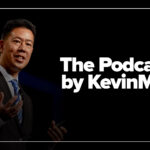Is your baby’s safe sleep a privilege?
In my Bronx clinic, I often sit across from new families who are well-versed in the American Academy of Pediatrics’ (AAP) safe sleep guidelines. Babies should sleep alone, on their backs, in a crib free of soft bedding and toys. Yet despite this knowledge, many parents, especially those who choose to exclusively breastfeed, face real-life barriers in following these recommendations. For single mothers and shelter seekers, co-sleeping often feels like the only option. Be it due to sleep deprivation, housing insecurity, overcrowding or lack of family support, these factors make “knowing” and “doing” two very different things.
The persistent dilemma
Nationally, the AAP’s Back to Sleep campaign (1994) significantly reduced Sudden Infant Death Syndrome (SIDS). Yet disparities persist. In 2022, the U.S. recorded a SUID (Sudden Unexpected Infant Death) rate of 100.9 deaths per 100,000 live births (CDC, 2022) with non-Hispanic Black infants facing a rate of 196.9 per 100,000, compared to 85.7 for non-Hispanic white infants. In the Bronx, where I practice, infant mortality rates are the highest in New York City with 5.2 deaths per 1,000 live births.
This preventable tragedy raises some uncomfortable questions:
- Is safe sleep a privilege?
- Is education the only answer?
My role and initiatives as your pediatrician
At NYC Health + Hospitals/Gotham Health (NYCHHC) Tremont Clinic, working as a primary care pediatrician, my mission is not only to share safe sleep education but to bridge the gap between awareness and real-world practice. Because no! Safe sleep should not be a privilege, but a right. To address disparities in my community, I secured a book grant from Charlie’s Book Foundation to provide bilingual safe sleep books at well-child visits. These books are more than educational tools; they often become the first book in a family’s home, building literacy alongside health knowledge. I use my time carefully, researching and collaborating with community social workers alongside connecting families to existing resources within my State. For example, New York State’s Department of Health offers programs like Cribs for Kids (free portable cribs for eligible families), in-home nursing visits, and parent education initiatives (NYSDOH). These resources often go underutilized simply because families are unaware of them.
The feedback I have received from families is heartwarming and serves as my moral compass.
Broader advocacy and call to action
Young physicians like myself are uniquely positioned to see both the progress and the gaps. We have witnessed how safe sleep campaigns have reduced infant mortality, but we also understand why disparities stubbornly persist. It is now our role to bridge medical knowledge with community realities and bring practical solutions to our families.
Call to action
To prevent this terrible tragedy and make safe sleep a universal right, we must:
- Support families by respecting cultural traditions while reinforcing the safety of crib-based sleep.
- Expand community outreach and seek resources on behalf of our families: programs like Charlie’s Safe Sleep Grant, State programs like NYSDOH’s Cribs for Kids and New York’s free portable crib distribution must be publicized and paired with well-child visits.
- Advocate for legislative equity: urge policymakers to strengthen safe sleep access by integrating crib programs and home visits into Medicaid coverage and investing in housing policies to reduce overcrowding.
- Empower young physicians: medical institutions must support pediatricians at FQHCs who innovate at the community level, ensuring they have the resources and recognition to scale their efforts.
I believe
Every infant deserves a safe sleep. By acknowledging the complexities families face and meeting them with tangible support, consistent messaging and policy change, we can make safe sleep not just a privilege, but a universal right.
Tanya Tandon is a pediatrician.



















![A lawyer's essential checklist for physician side hustles [PODCAST]](https://kevinmd.com/wp-content/uploads/Design-1-190x100.jpg)
![Why modern dentists must train like pilots [PODCAST]](https://kevinmd.com/wp-content/uploads/Design-3-190x100.jpg)

